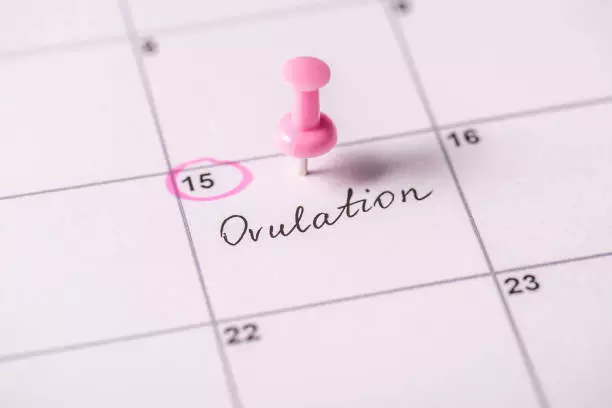Planning a pregnancy can sometimes seem complex, especially when it comes to understanding your own menstrual cycle. To increase their chances of having children, many women turn to an essential tool: the ovulation calculator. This device allows women to determine their most fertile days and thus optimise their ability to conceive a child. In this article, we’ll take an in-depth look at what an ovulation calculator is, why it’s useful and how it works.
The menstrual cycle: an overview
To fully understand the usefulness of an ovulation calculator, you first need to understand the female menstrual cycle.
The phases of the menstrual cycle
The average menstrual cycle lasts around 28 days, although this can vary considerably from one woman to another. It is divided into several phases:
- Menstrual phase: This phase begins on the first day of menstruation and generally lasts between 3 and 7 days.
- Follicular phase: Begins at the same time as the menstrual phase but continues until ovulation. Oestrogen levels rise to prepare the egg.
- Ovulation: A mature egg is released by the ovaries. This is when the chances of fertility are greatest.
- Luteal phase: This follows ovulation and lasts until the start of the next period. During this period, the body may be preparing for pregnancy.
The importance of ovulation in conception
Ovulation is a key stage in the menstrual cycle because it corresponds to the release of an egg ready to be fertilised. Accurately identifying the moment ofovulation therefore makes it possible to know when a woman is most fertile. This is exactly where the ovulation calculator comes in.
What is an ovulation calculator?
An ovulation calculator is a tool designed to help women predict the days when they are most likely to become pregnant.
How an ovulation calculator works in general
An ovulation calculator usually works by using data provided by the woman about her menstrual cycle. Typical information required includes
- The average length of the menstrual cycle
- The first day of the last period
By entering this data, the calculator uses standardised formulas to estimate the approximate date of ovulation and also indicates the window of maximum fertility.
Advantages of using an ovulation calculator
Using an ovulation calculator offers a number of benefits:
- Increased accuracy: Allows you to accurately identify the dates that are favourable for fertilisation.
- Simplicity: Does not require sophisticated medical equipment.
- Convenience: Can often be used online or via a mobile application.
Different types of ovulation calculator
There are various types of ovulation calculator, each with its own unique features.
Calendar-based calculators
This type of ovulation calculator uses the dates of the last period and the usual length of the menstrual cycle to make its predictions. They are simple to use and can be accessed via various websites and applications. However, their accuracy is highly dependent on the regularity of the menstrual cycle.
Ovulation tests
Ovulation tests use a different method. Usually sold in pharmacies, they measure hormone levels in the urine to indicate the days of maximum fertility. These tests can offer greater accuracy than calculators based solely on the calendar.
Mobile applications
Many sophisticated applications currently exist to help women track their menstrual cycle and predict their ovulation. These applications often combine several methods, including calendars, symptom reminders and even the integration of wearable technologies that monitor body parameters (such as basilic temperature).
Making the most of an ovulation calculator
To get the most out of an ovulation calculator, there are certain practices you can adopt.
Regularly monitor your menstrual cycle
Keeping a detailed diary of your menstrual cycle helps to feed the ovulation calculator with accurate data. The more regular and accurate the entries, the more reliable the calculation.
Combining with other fertility monitoring methods
Using an ovulation calculator in conjunction with other fertility monitoring methods, such as measuring basal body temperature and observing cervical mucus, can boost your chances of success. The basal body temperature rises slightly after ovulation, providing a valuable indication. The consistency of the cervical mucus changes during the cycle, becoming transparent and stretchy near ovulation, which is another effective indicator.
Disruptive events and adjustments
Although ovulation calculators are extremely useful, certain events or conditions can disrupt the results.
Stress and lifestyle changes
External factors such as stress, travel or drastic changes in routine can have a profound effect on the menstrual cycle. In the event of persistent abnormalities, it may be necessary to review the data used by the ovulation calculator.
Underlying medical conditions
Certain diseases or hormonal disorders can also affect the accuracy of an ovulation calculator. Regular medical consultations are recommended for women with irregular cycles. Talking to a healthcare professional can help you better understand and manage your menstrual cycle.
Practical examples of use
Imagine Carol, a 30-year-old woman with relatively regular 28-day cycles. She wants to use an ovulation calculator to optimise her chances of pregnancy.
Carole starts by entering the first day of her period into an ovulation calculator application. The application also asks her for the average length of her cycles, which she identifies as 28 days.
According to the application, her peak fertility days fall between the 12th and 16th day of the cycle. Carole also tracks her basal body temperature every morning and observes variations consistent with her ovulatory days predicted by the calculator.
Using these tools, Carole maximises her chances of procreation by planning her sexual encounters around this suggested window of fertility.

